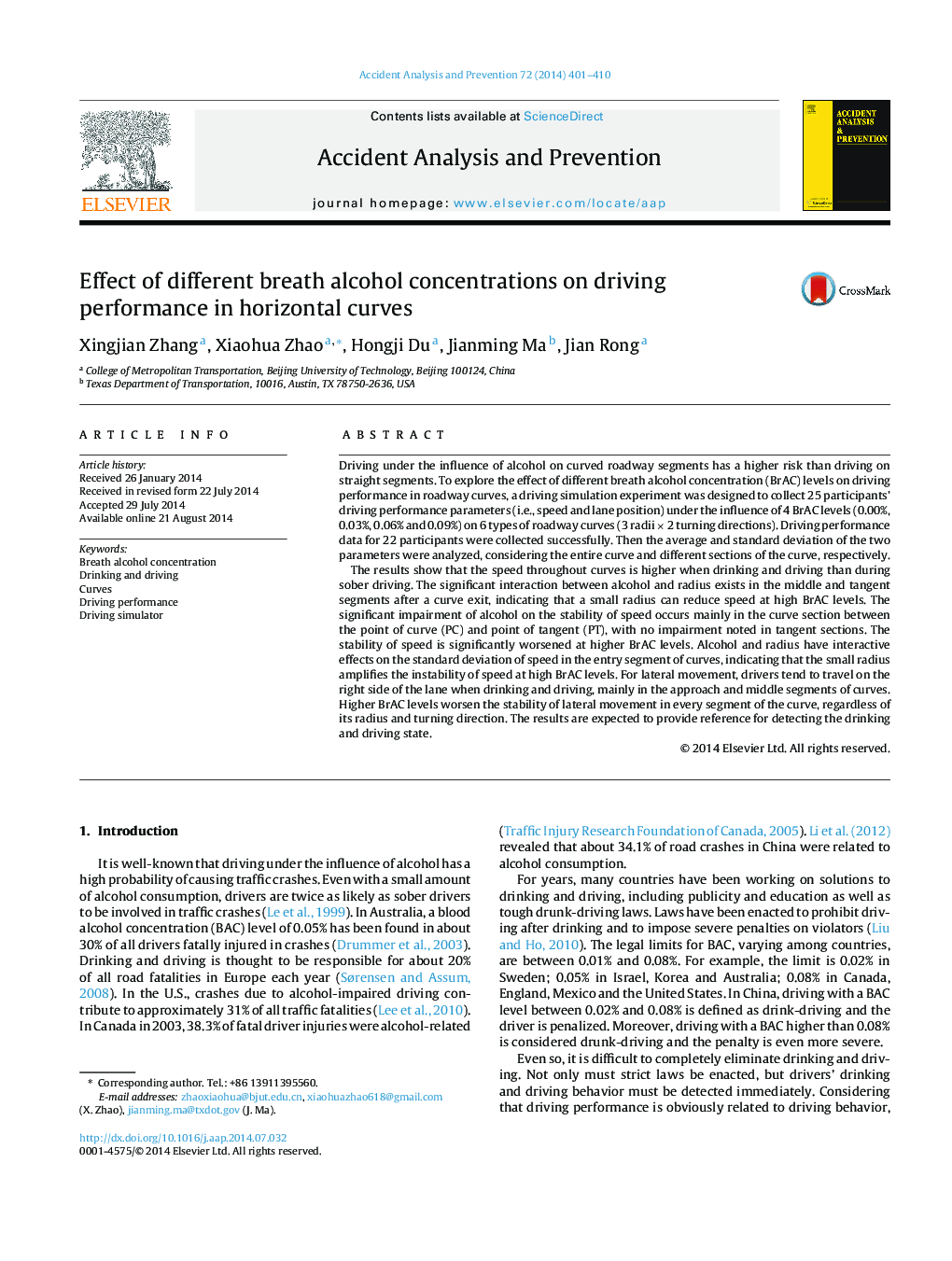| کد مقاله | کد نشریه | سال انتشار | مقاله انگلیسی | نسخه تمام متن |
|---|---|---|---|---|
| 572287 | 1452925 | 2014 | 10 صفحه PDF | دانلود رایگان |
• Driving performance is affected obviously by alcohol in curves.
• The effects of alcohol on driving performance vary with road geometry.
• Drivers tend to drive with higher speed under the influence of alcohol.
• Alcohol makes the stability of speed and lane position of vehicle worse.
• We show the detailed effects of alcohol on driving performance in different positions.
Driving under the influence of alcohol on curved roadway segments has a higher risk than driving on straight segments. To explore the effect of different breath alcohol concentration (BrAC) levels on driving performance in roadway curves, a driving simulation experiment was designed to collect 25 participants’ driving performance parameters (i.e., speed and lane position) under the influence of 4 BrAC levels (0.00%, 0.03%, 0.06% and 0.09%) on 6 types of roadway curves (3 radii × 2 turning directions). Driving performance data for 22 participants were collected successfully. Then the average and standard deviation of the two parameters were analyzed, considering the entire curve and different sections of the curve, respectively.The results show that the speed throughout curves is higher when drinking and driving than during sober driving. The significant interaction between alcohol and radius exists in the middle and tangent segments after a curve exit, indicating that a small radius can reduce speed at high BrAC levels. The significant impairment of alcohol on the stability of speed occurs mainly in the curve section between the point of curve (PC) and point of tangent (PT), with no impairment noted in tangent sections. The stability of speed is significantly worsened at higher BrAC levels. Alcohol and radius have interactive effects on the standard deviation of speed in the entry segment of curves, indicating that the small radius amplifies the instability of speed at high BrAC levels. For lateral movement, drivers tend to travel on the right side of the lane when drinking and driving, mainly in the approach and middle segments of curves. Higher BrAC levels worsen the stability of lateral movement in every segment of the curve, regardless of its radius and turning direction. The results are expected to provide reference for detecting the drinking and driving state.
Journal: Accident Analysis & Prevention - Volume 72, November 2014, Pages 401–410
